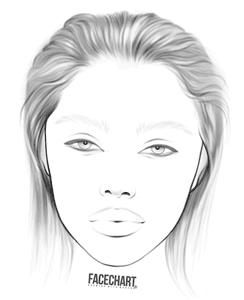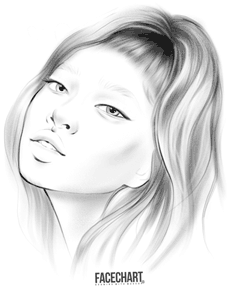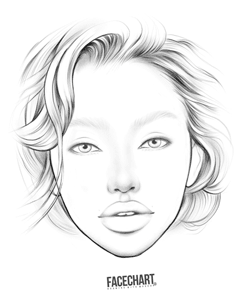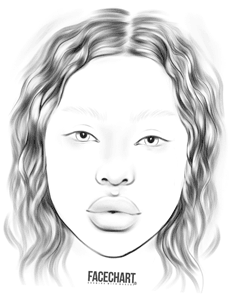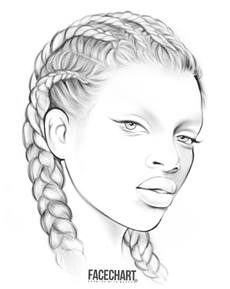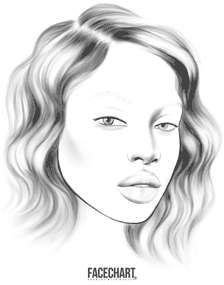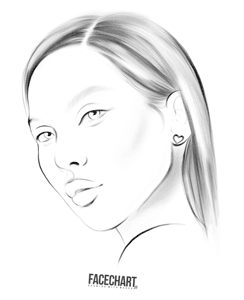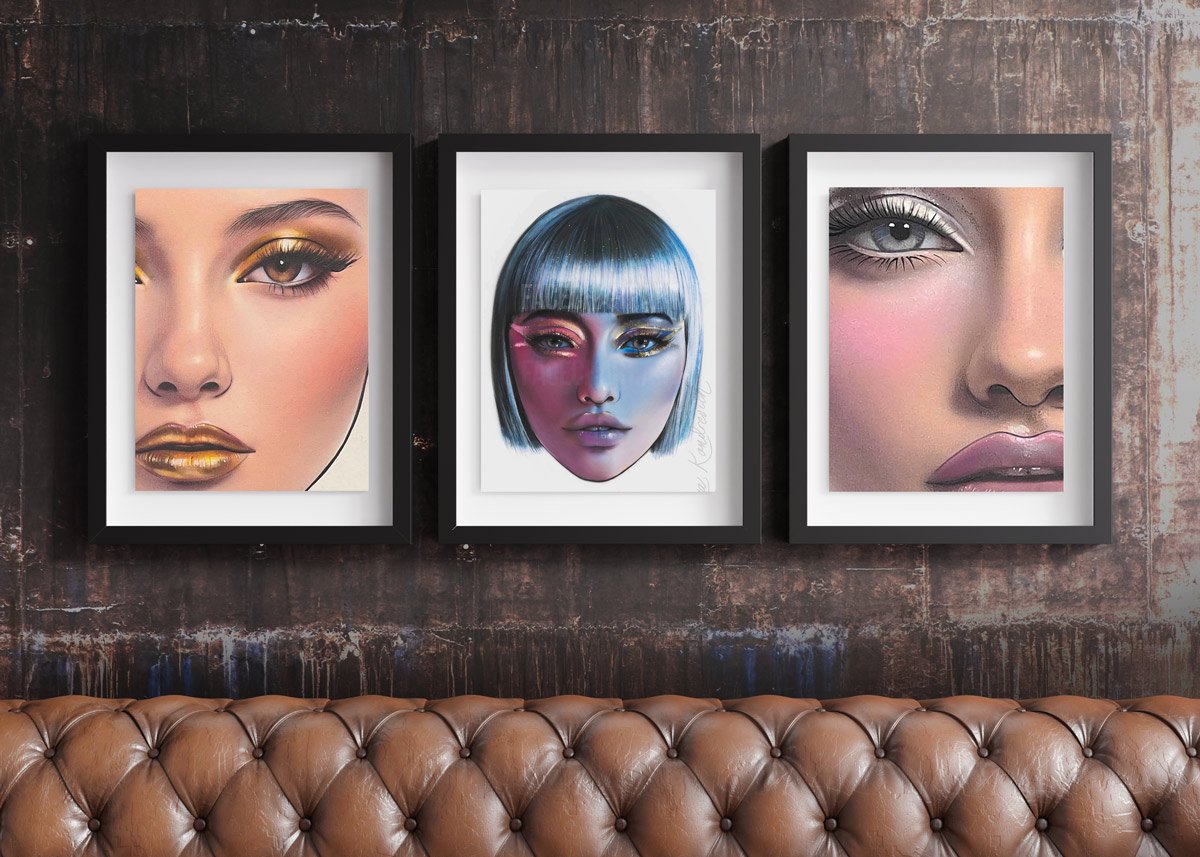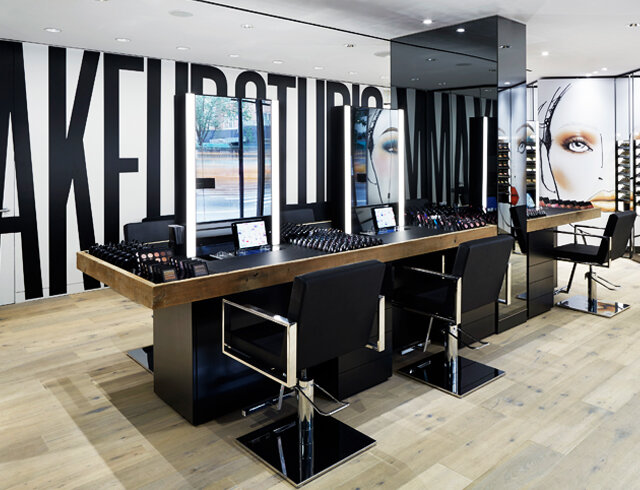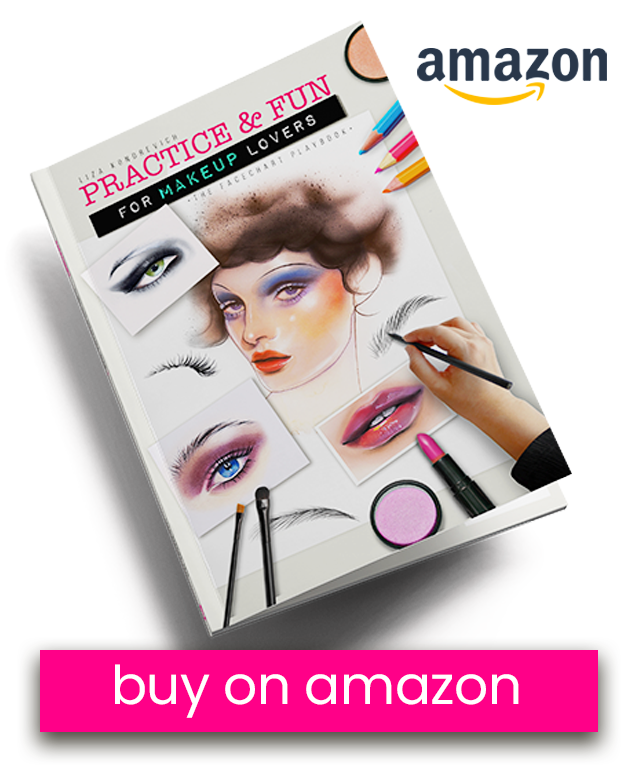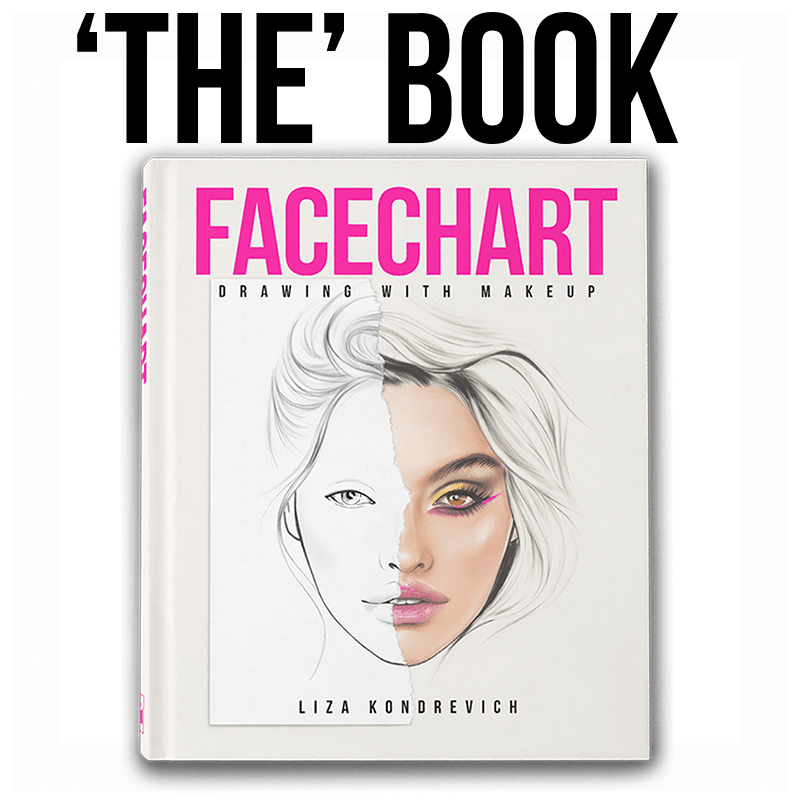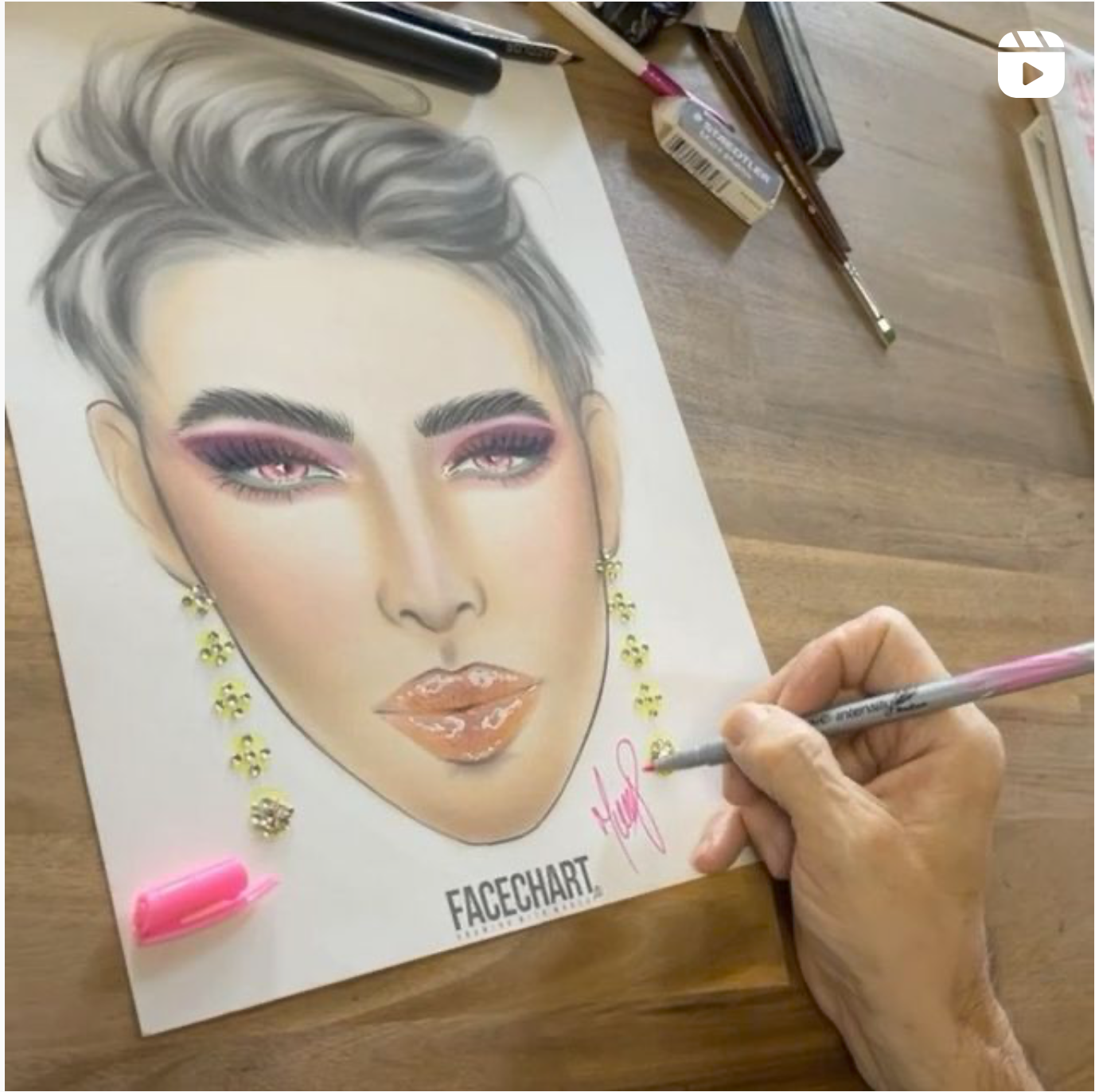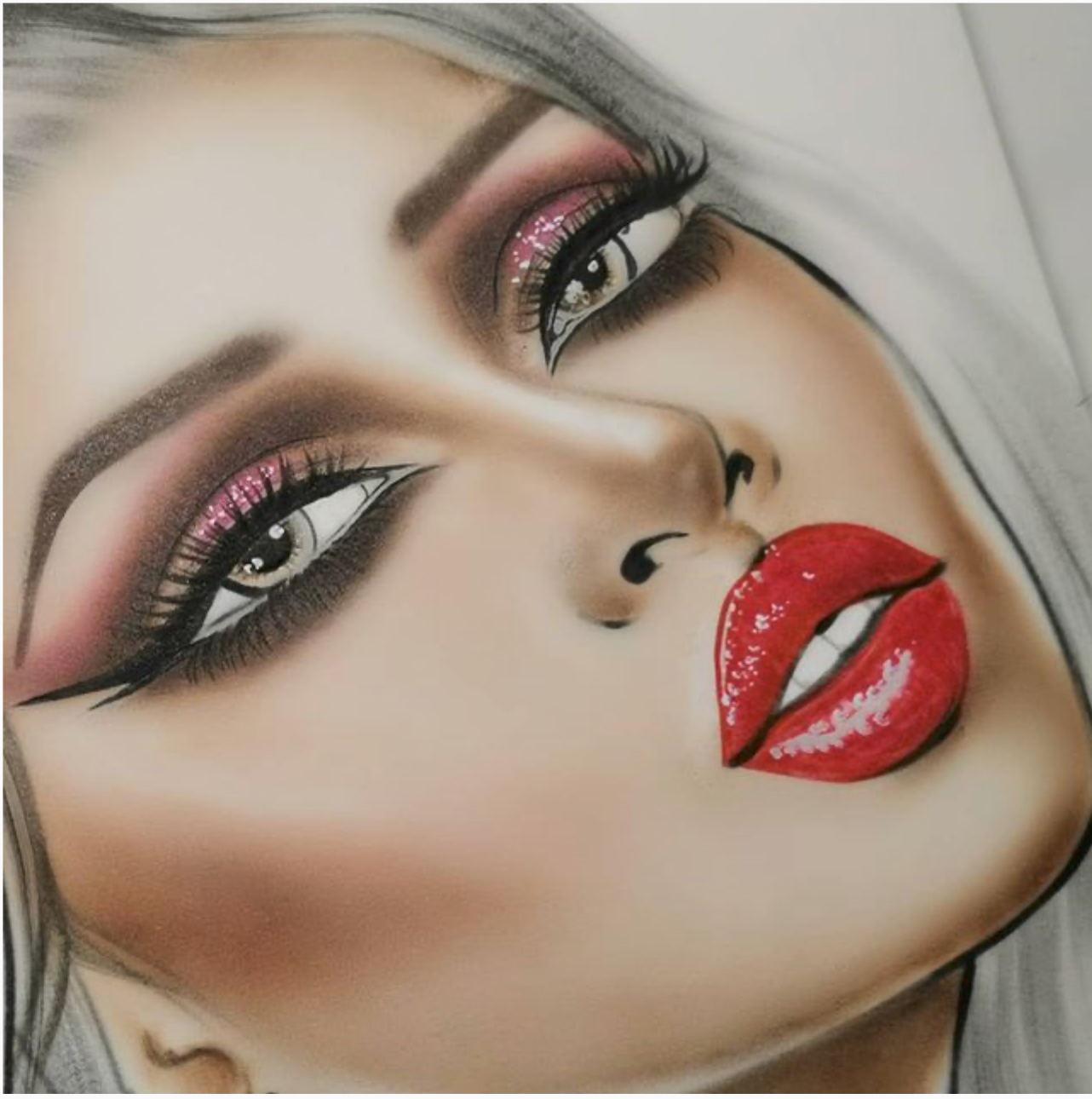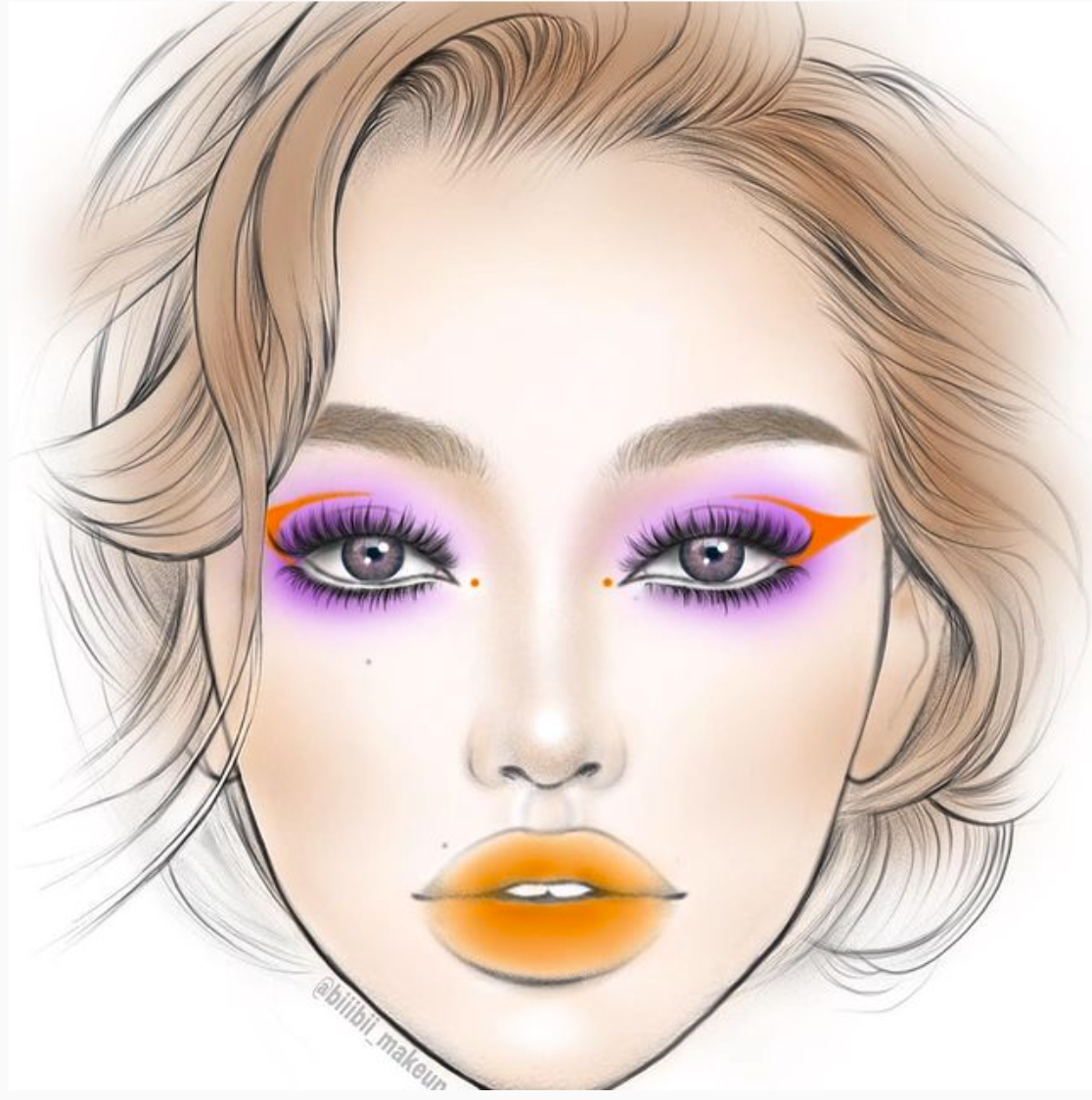What are face charts used for? Face chart 101
Face Templates For Makeup Artists aka a Face Charts, what are they?
Ever wondered what those "face templates" makeup artists use are called? They're called "face charts," Liza here, and today we're diving deep into the world of face charts!
Here's why you might hear someone ask, "What's a face chart?" or "What is a face chart for makeup?"
In this article, we'll break down what a face chart is and explore the magic it brings to the world of makeup. We'll discover that "face charting" goes beyond just line art or coloring pages – it's a powerful creative tool used by makeup artists to communicate looks, styles, and specific cosmetic products.
But guess what? "Face charting" has grown beyond professional use; these days, it's a fun and creative hobby that any makeup enthusiast can enjoy!
“Face charts are the most underrated, powerful tools for makeup artists”
Face Charting: The Art of Drawing With Makeup on Paper
Let's be honest, "drawing with makeup on paper" sounds a little odd, right? Especially for anyone new to the world of makeup. But believe it or not, there's a whole community out there who swear by face charts – and for good reason!
Here's the thing: even makeup enthusiasts can be surprised by the existence of face charts. So, if you're a makeup lover (we all have a little addiction, right?), always on the hunt for ways to elevate your look, and you stumbled upon some amazing makeup artwork online, wondering what it was all about... well, this article is for you!
Curious about the purpose of face charts and how you can use them? Maybe you even dreamed of creating stunning makeup art yourself? Good news! If you're intrigued by these "face templates for makeup artists” and want to unleash your inner creative genius, i'll show you exactly how to get started for FREE at the end of this article!
What is a face chart?
The term 'face chart' may not immediately ring any bells, but I think there is a good chance that you have walked into a MAC Cosmetics store at some point. Besides the desirable makeup palettes, brushes, and novelties displayed there, your eye has probably fallen for the 'makeup drawings' or 'prints' that are prominently present there.
Credits: buro247 | MAC Cosmetics makeup studio
They are found on counters, at workplaces in front of mirrors, and even in the shop window. Often there is a collection folder to browse through. They actually look like coloring pictures, some basic facial outlines, with some color applied to them, but there’s more beneath the surface. Those face templates are valuable makeup tools called face charts.
At MAC Cosmetics, they have understood its added value for a long time very well. Have you ever seen them there? (If you like to know all about the professional benefits of face charts for makeup artists read this article.)
These days, face charts are amply represented on social media, so you really can't have missed it. But that's why you're here now.
According to many pro artists, face charts in their simplest form emerged sometime in the 1980s, their popularity increased over the years, and they have barely evolved until recently. The MAC face chart has been the gold standard for years. Until NYX Cosmetics changed the game of facecharts forever, more on that later.
Credits: Sephora | Face chart illustration used to display products
The Magic Behind the Face Chart: More Than Just Lines on Paper
Okay, so a face chart might look like a simple "face template" with lines printed on it. But for makeup artists, it's a secret weapon! These charts are like a visual language, allowing them to communicate all sorts of makeup magic:
Client Collaboration: Imagine showing your client exactly what their makeup will look like for a photo or video shoot – a face chart does just that! No more guesswork, just flawless makeup looks approved by everyone.
Skill Sharpening: Need a practice session? Face charts are your blank canvas! Experiment with different color combinations, hone your blending techniques, and unleash your creativity without wasting precious makeup products.
Brand Storytelling: Face charts are a powerful tool for brands too! They can be used to communicate new product launches, showcase brand direction, and even support educational teams by providing clear color and placement instructions. Plus, stunning face charts can elevate magazines and product lookbooks, adding a touch of artistic flair.
Portfolio Powerhouse: Looking to stand out from the crowd? Face charts are a fantastic way to showcase your artistic skills and makeup expertise. Building a portfolio filled with these beauties will definitely grab attention!
But wait, there's more! Face charting has transcended its practical roots and become a creative movement in its own right. We'll explore that exciting evolution next...
Bringing Your Face Chart to Life: From Business to Fun!
So, we've talked about the magic behind face charts, but how do they translate into real life? Buckle up, because these versatile tools can be used in a surprising number of ways:
Business Savvy
Remember that friendly MAC makeup artist we met earlier? Well, face charts are their secret weapon for client consultations! They can use them to show you exactly which products go where, experiment with color combinations, and ensure you love your final look before a single drop of makeup touches your face. It's a win-win for everyone!
Skill Sharpening Playground
Face charts are also a makeup artist's personal playground. During those quiet downtime moments, artists can use them to practice blending techniques, test out new product combinations, and unleash their creativity without wasting precious makeup. Think of them as a risk-free zone to experiment and hone their skills!
Portfolio Powerhouse
Need to showcase your talent to potential clients? Face charts are a fantastic way to do just that! A portfolio filled with stunning face charts showcasing your artistic vision and makeup expertise is guaranteed to grab attention.
Beyond Business: Face Charts as a Creative Hobby
But face charts aren't just for serious business anymore! They've become a fun and creative hobby for makeup enthusiasts everywhere.
My Personal Face Chart Magic:
Now, let's take a peek behind the curtain at how I use face charts, especially on photo or video shoots. Since I often collaborate with artistic teams, face charts become my blueprint for the entire makeup process. I pre-design each model's look on a face chart beforehand. This allows me to be super prepared for the shoot, ensure all the models' makeup looks cohesive if needed, and most importantly, communicate my vision clearly with the entire team. These charts act as a roadmap, detailing exactly which product in what color goes where. No more guesswork, just flawless makeup magic for everyone involved!
Credits: Liza Kondrevich | Face chart used to showcase (NYX Cosmetics) collections
In the entertainment industry, or for video and photoshoots, it is a useful tool to design, plan, and register makeup looks in advance and show customers the various options. This saves a lot of time and eliminates the guesswork.
Netflix Bridgerton’s Penelope Drawing with Makeup by Liza Kondrevich
“Face charts are the blueprints of your appearance.”
WATCH FACE CHART VIDEOS ON YOUTUBE
How are face charts for skill-building?
If I may reveal a secret to you that few know, this is it. This is where the direct profit can be made. Use the philosophy behind the face chart to improve your overall makeup skills. Once you know how and why, it all becomes clear. You can improve yourself in many areas if you practice on paper; some obvious examples of improvement are:
hand firmness, practice tight, steady lines.
fine-tuning the use of color (if you only knew what you could achieve with it)
blending techniques, face charting is an excellent system to learn how to blend perfectly
understanding of light and shadow, essential to any makeup artist if you ask me
understanding human facial features such as brows, lashes, and how these are build up.
endless creativity. There is more than just an black line on your lower eyelid. Encourage and challenge yourself to go beyond your creative limits–there aren't any.
Learn to blend makeup on paper. Visit Makeup Designer Academy to Become a Makeup Designer in no-time!
The 10,000-Hour Rule.
You know the saying 'it takes 10,000 hours to become a master in something? In the book "Outliers: The Story of Success" by Malcolm Gladwell, it is written that that is the minimum number of hours it takes to be a true master of a trade. This is a frequently mentioned topic and for a good reason. For makeup artists, too, the amount of knowledge, training, and practical experience gained determines whether the profession is mastered.
Credits: Liza Kondrevich | Practice on paper using face charts.
"Only one who devotes himself to a cause with his whole strength and soul can be a true master. For this reason, mastery demands all of a person." – Albert Einstein
The paved road to the next level in makeup skills:
Gain knowledge, regardless of what level you’re at, this is the foundation you build on.
Don’t be arrogant and dare to learn from knowledgable people.
Practice as much as possible and learn from your mistakes.
Invest in teaching materials. Take courses, attend master classes, and read books about your passion.
Persevere in your goals. Do!
Never give up.
If you haven't stopped reading yet, anxious and sweating with this vision of the future ahead of you, have no fear, the art of face charting shows amazing results very quickly. What I'm saying with this is that if you want to become a master in makeup, you need those hours.
Of course, real live models are always preferable to practice your techniques on, and face charting alone won't teach you any skin appliance, and it only covers part of the spectrum. Face chart techniques, once mastered, can be used to master any aspect within the artistry of makeup. Wether it’s blending techniques. color theory, drawing realistic eyebrows, lip art, or how to implement and create the illusion of light and shadow, all are fundamental to any makeup artist.
Another big plus is; face chart templates are available 24/7, possibly disposable in case something goes wrong, and you can practice on them whenever and wherever you want! You won't be able to do most of that with live models.
Read about Ten Secret Face Chart Advantages Every Makeup Artist Can Benefit From here.
For example, you can work through an evening, work out different eyeliner ideas, and several eye makeup looks, plus matching lip makeup, on 5 different types of models. To set an example. The possibilities are endless. Here’s a short action video that shows part of the process.
Face charts used for education.
Reputable makeup schools (House of Orange for example) almost all have at least one section dedicated to the face chart. Some more, some less, and often they start talking about it in the basics at the beginning of the training. While I believe it has been given ample attention, it captures its essence – it is a fundamental skill at the foundation of solid makeup education.
Often separate incentives are linked to the training. For example, I myself offer tailor-made programs for schools and major cosmetic brands, where I give one or multiple day masterclasses to supplement the teaching material, or setting up training programs for artistry teams.
Face chart art as a professional hobby:
Where the implementation of the face chart in the business or educational field (not for skill-building) is often quite simple, with only filling in some colors, exclusively with makeup products, in recent years, we have seen complete works of art appearing that pass for face charts. Realistic-looking portraits with the most frantic makeup creations, or just genius through simplicity, but artistic delights. An entire community rises out of nowhere, and its level and quality are increasing gradually. So you may be wondering why there are so many makeup drawings appearing on social media. And the answer is simple: it's hot and happening!
It's fun, and if you are passionate about makeup, this makes a deep connection with yourself, providing another way to express yourself creatively. Hours fly by when you're doing this. And you don't think about anything, no daily worries but are in pure focus. "it is mesmerizing, blending and creating for hours with my favorite products and brushes, hours of spending 'my' time."
Aren't face charts obsolete in this digital age?
You might have noticed the many digitally created face charts on social media. What do you think of that? Personally, I find digitally processed face charts less relevant for several reasons from my makeup-loving point of view. First of all, you notice at a glance that it has been made digitally; there is no soul in it (with a few exceptions.) Then there is also no makeup involved, not even the smallest particle of powder, no pigment, nothing, not even a brush. Therefore, it is most certainly not suitable for learning how to blend makeup. However, purely as a quick overview or to give a color idea to a customer, it might still make sense, although you still have to find corresponding colors in your makeup stock.
Of course, producing digital face charts is also a fun way to get busy, and you can pop dozens of designs in no time. But, in my humble opinion, it is a bit too far from the beautiful makeup artistry. What it does serve the purpose, I think, is to inspire people. People love to recreate face charts. Some of the well-known accounts that bring digital face charts into the world non-stop are definitely worth a look.
Like makeup artists will not soon be replaced by a digital variant, the same applies to the face charts. So my humble conclusion is: handicraft and true skill are becoming more and more valued and desired.
If you like to learn more about the best face chart templates in the world, you might like to read this article.
Earlier I mentioned coming back to the evolution of the face chart, which has recently started. For a long time, the MAC facechart, which is still iconic, was the standard. The ugly, grumpy-looking, un-desirable design has earned its place, but now they're really outdated. The massive shift in the industry is mainly due to the release of the FACECHART book, in which all knowledge is shared and all secrets are revealed, and the vision shift of the prominent brands. NYX Cosmetics is currently leading the way, and many are following.
If you like to know What’s Inside The Facechart Book: Read this Blog
Credits: Liza Kondrevich | Face chart design for NYX Cosmetics 2021
The reason why the “face chart book” is so successful, while there are more than enough makeup books out there, you can read here.
How to start Face charting?
Are you ready to immerse yourself into the colorful world of face charts? Start today!

